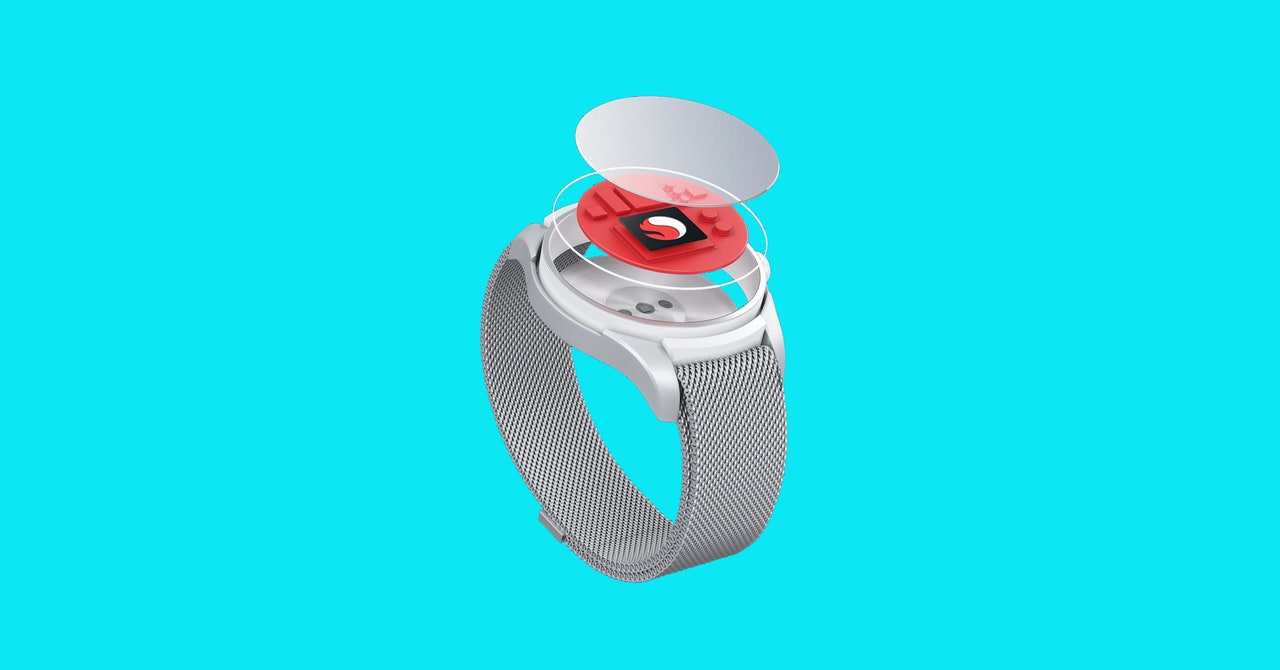A wave of better smartwatches is on the way soon. Qualcomm just unveiled two new processors—the Snapdragon Wear 4100+ and Wear 4100—which will both power upcoming wearables running platforms like Google’s Wear OS.
Qualcomm claims the chips offer a sizeable bump over their predecessor, the Snapdragon Wear 3100, which debuted in 2018. That’s mostly because the pair of new chips are fabricated on a 12-nanometer manufacturing process as opposed to the 3100’s 28-nanometer process. The smaller the size, the less power the chip needs, making it more energy efficient. Plus, a chip with smaller features can be packed with more transistors, which results in more computing power.
Qualcomm claims that new smartwatches using the Wear 4100 chips can expect to see an 85 percent performance improvement over smartwatches using the Wear 3100, as well as 85 percent faster memory, 25 percent lower power usage, and a boost in graphics performance that’s 2.5 times greater than the older chip. Such gains should result in faster app launches, a smoother user experience, better multitasking, and longer battery life.
All of these improvements are important upgrades for Wear OS watches, which lag behind the competition—most notably the Apple Watch, which is the best-selling smartwatch on the market.
The 4100 and 4100+ both use a quad-core Cortex A53 processor, but between the two, only the 4100+ combines it with a smaller co-processor. This co-processor handles many of the background tasks Wear OS smartwatches run when the device is in ambient mode, the low-power state the wearable defaults to when it’s not actively being used.
The co-processor hasn’t changed much over the one on the Wear 3100, but upcoming Wear OS smartwatches will still be able to offer a richer experience. For example, at the moment only 16 colors are supported in ambient mode; with the 4100+, that number goes up to 64,000. Newer watches will also be able to show continuous heart rate and sleep monitoring data in this mode (if sleep monitoring ever becomes natively supported on Wear OS).
Those upgrades also impact Watch Mode, a feature in Wear OS that lets you turn off most of the device’s smart functions in order to extend the battery life by several days. Rather than just showing the time and date in Watch Mode, wearables with the new pr

